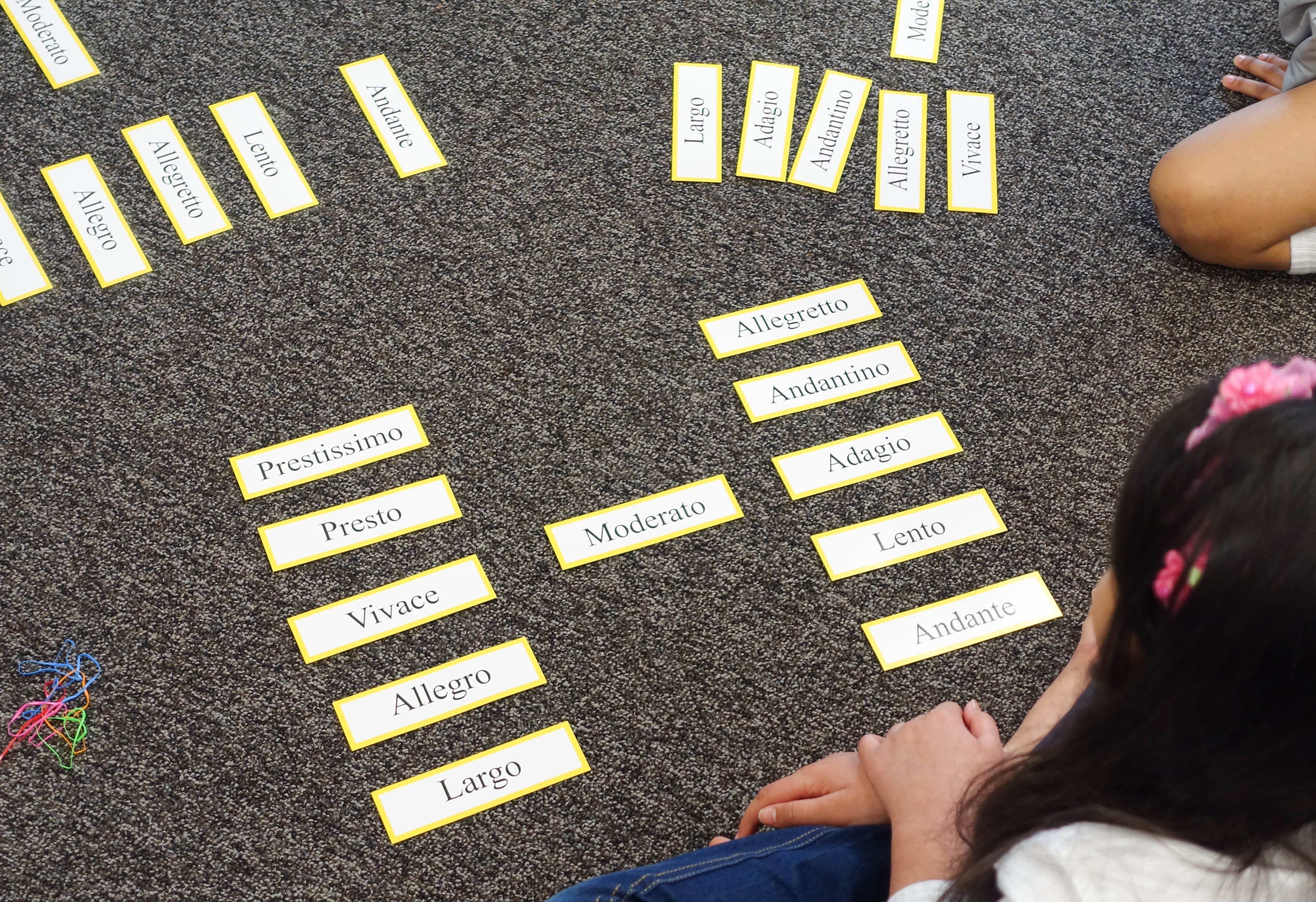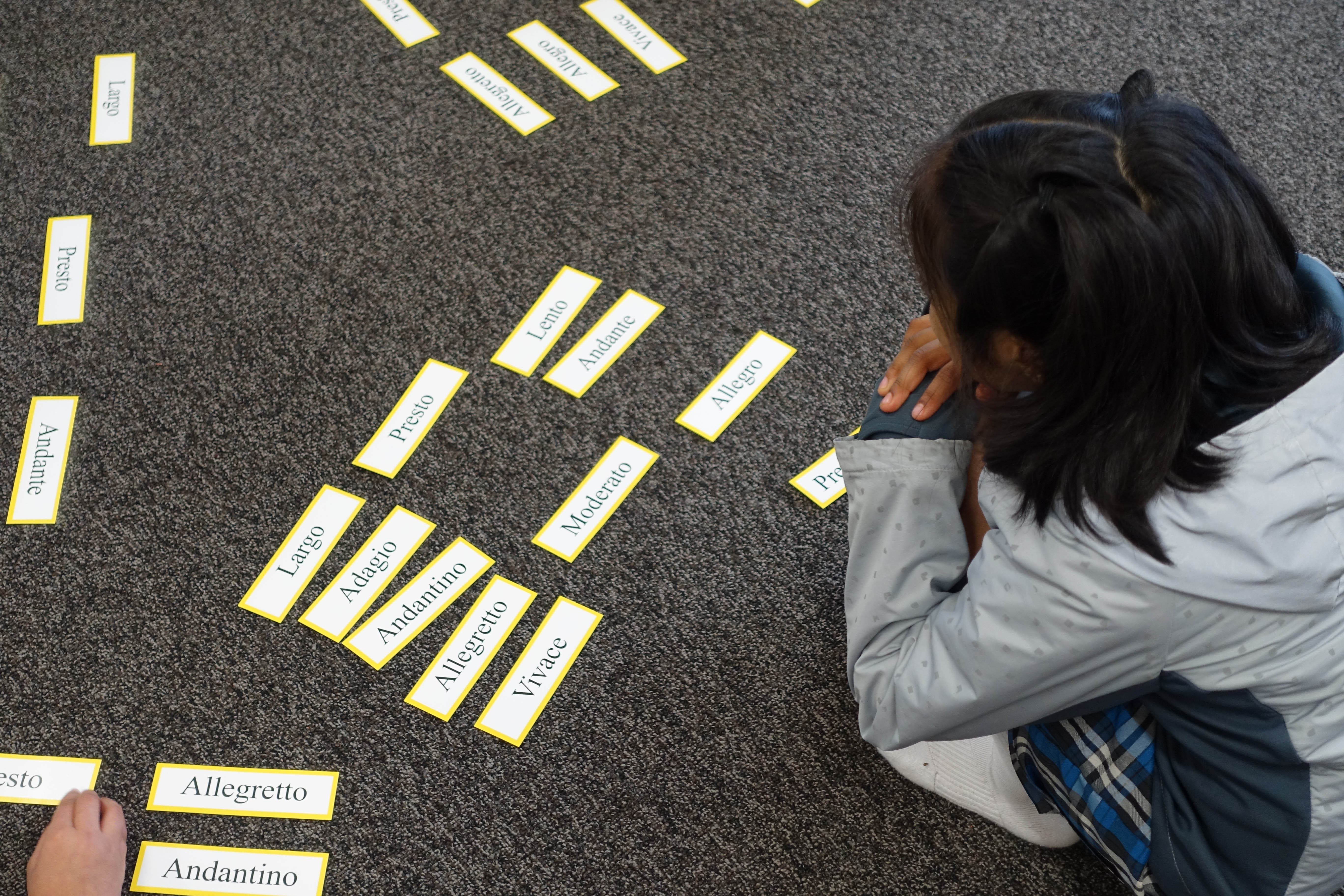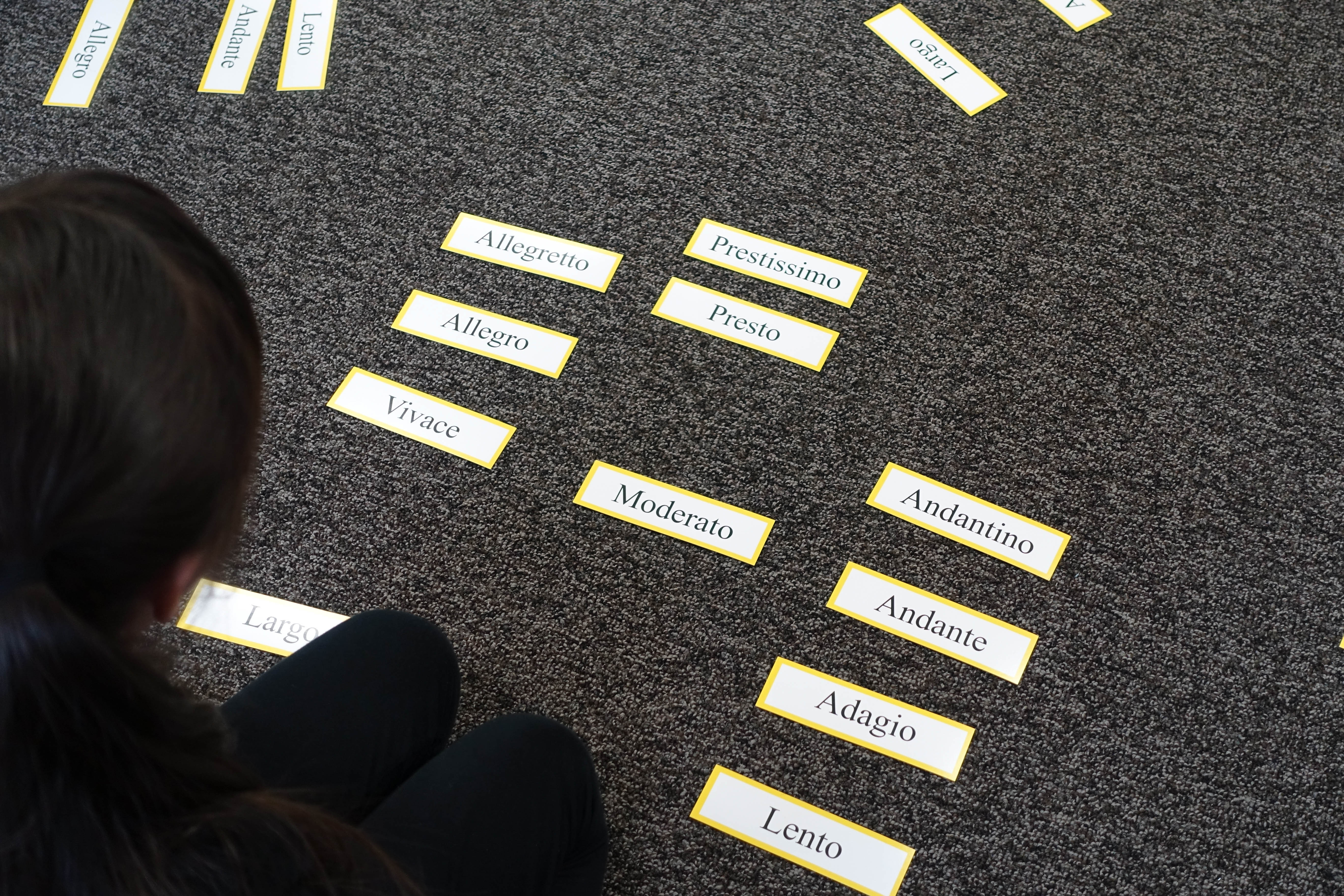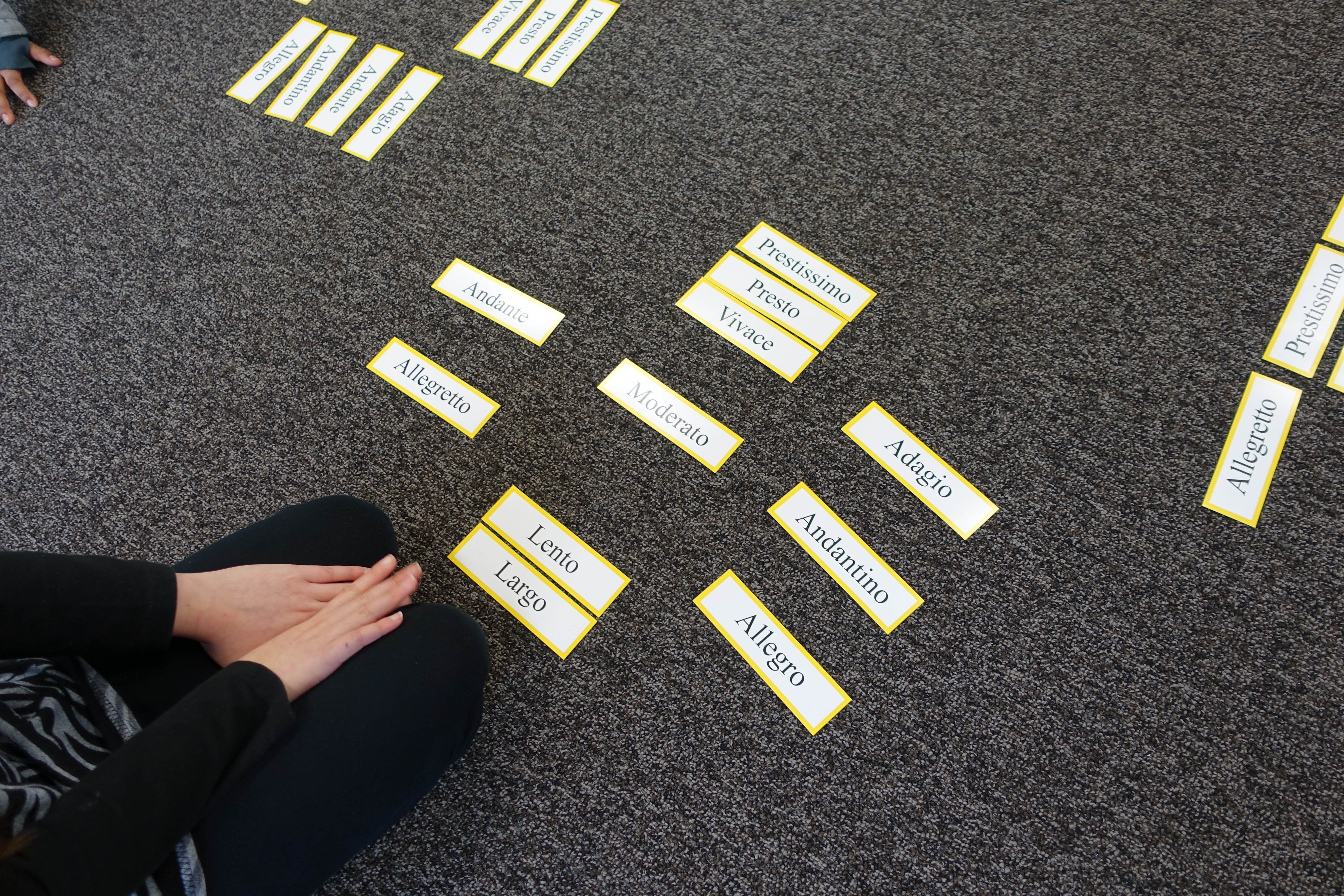1. Begin with the middle term, Moderato. “Which one do you think could be in the middle?” They’ll likely answer Moderato since it also begins with an “M”.

2. "Which tempo is fast, but not the fastest?" They may have several guesses until they agree on Presto.

“What word could you use for a tempo faster than Presto?”
“Prestissisimo?”
“Yes!”

Explain that “issimo” means more, like “very” – Fast and very fast. What could be faster than "Prestissimo?"
Likely they may not know so you can say, "Prestississimo!"
They will smile. "What's faster than Prestississimo?"
"Prestissississimo!"
Of course, this is a joke, but it's an important point to make. Everyone will understand by the end of the game.
3. "What is a slow tempo, but not the slowest?" Again they may toss out a couple of terms. Let them continue to reach a decision and decide on Lento.
"What's slower than Lento?"
"Largo?"
For transparency, it's good to say that by some definitions Largo and Lento are interchangable.

Ask them to figure out how what could be a tempo slower than Largo. Give them hints (comparing Presto & Prestissimo until they answer, "Larghissimo". Understanding the meanings of the suffix "issimo" in an important step in thinking of the tempos in a symmetrical pattern. Point to add the cards and practice saying them.
Ask them how they might remember where these five cards are placed. They will point out the two “L’s” and two “P’s”.
(Play Fine)
